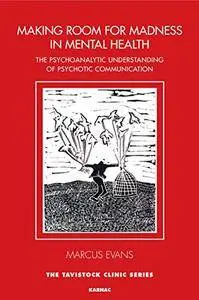Making Room for Madness in Mental Health: The Psychoanalytic Understanding of Psychotic Communication (The Tavistock Clinic Series) by Marcus Evans
English | 2016 | ISBN: 178220329X | 240 pages | PDF | 3,5 MB
English | 2016 | ISBN: 178220329X | 240 pages | PDF | 3,5 MB
In this book, Marcus Evans argues that in addition to providing a helpful treatment for patients with serious psychological difficulties, a psychoanalytic approach can help mental health staff develop a better understanding of their patients that complements other ways of thinking about mental disturbance. The psychoanalytic framework, which puts the transference and counter transference relationship at the center of clinical practice, offers an important model for understanding staff-patient relationships. A psychoanalytic approach can also give mental health professionals a language for describing their experiences of, and interaction with, their patients. This framework for understanding can help in the day-to-day management of these changes and fluctuations.
Evans argues that the diagnosis and active interventions employed by psychiatry need to be accompanied by a receptive mental approach to treatment and care. Mental health professionals need to be interested in the meaning of their patient’s symptoms together with verbal and physical communications, which convey important information about the patient’s internal world and underlying conflicts.
Making Room for Madness in Mental Health draws on the author’s extensive experience of working psychoanalytically with people with severe and enduring mental illness as well as providing psychoanalytic supervision and consultation in a range of mental health settings, to show how psychoanalytic ways of thinking may complement other approaches to mental disturbance by highlighting the communication and meaning of such disturbance. This is illuminated by lively clinical vignettes, supported by accessible accounts of key psychoanalytic theory.
Working with mental illness can be rewarding and enlightening. It can also be disturbing, frightening, boring, frustrating, anxiety provoking and stupefying. Indeed when patients are in disturbed states of mind their communications and actions have a disturbing effect on mental health professionals. These disturbances can provoke reactions in staff designed to control the patients thinking or behavior. Although at times these reactions may be both necessary and appropriate they are designed to dampen and control disturbing states of mind. Evans argues that this can represent a missed opportunity as the underlying meaning of the communication is missed, ignored or crushed. Psychoanalysis offers a model for thinking about and providing meaning for, the anxieties that drive us "out of our minds", and this can reduce the risk of thoughtless action. To some extent this involves putting the madness back into mental health.



